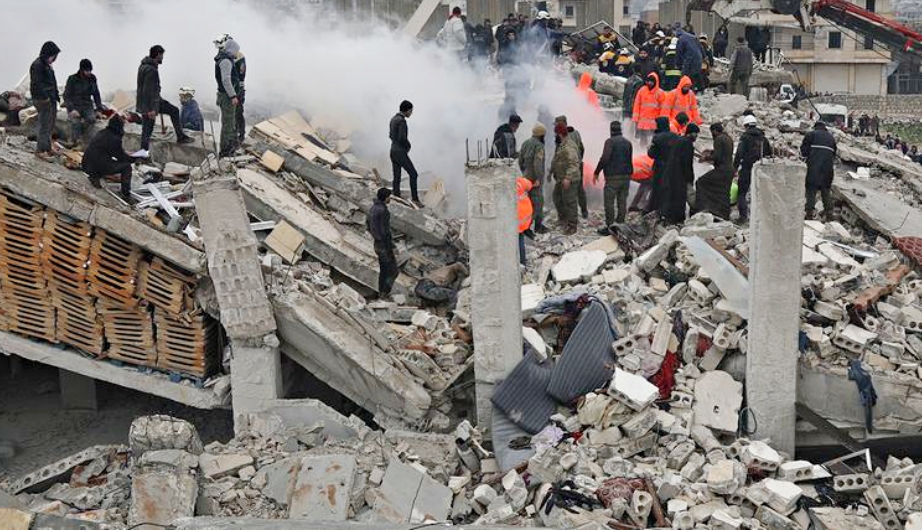Earthquake Damage in Türkiye Estimated to Exceed $34 billion: World Bank Disaster Assessment Report

ANKARA, February 27, 2023—The two very large earthquakes of February 6 caused an estimated $34.2 billion in direct physical damages in Türkiye, the equivalent of 4% of the country’s 2021 GDP, according to a World Bank rapid damage assessment report released today. The report also acknowledges that recovery and reconstruction costs will be much larger, potentially twice as large, and that GDP losses associated to economic disruptions will also add to the cost of the earthquakes.
Continued aftershocks will also likely add to this damage estimate over time, says the report, which has been prepared to help inform the early response of the World Bank Group and its partners and to support government planning for recovery and reconstruction in Türkiye.
The February 6 earthquakes of 7.8 and 7.5 magnitude, followed by more than 7,500 aftershocks and two additional earthquakes, have resulted in the largest such disaster to hit the country in over 80 years, and have inflicted the heaviest damage in 11 provinces in southern Türkiye. These regions have some of the highest poverty rates in Türkiye and also host more than 1.7 million Syrian refugees, which is almost 50% of the total Syrian refugee population in Türkiye.
The Global Rapid Post-Disaster Damage Estimation (GRADE) Report, which focuses on the direct physical damages in Türkiye, also estimates that 1.25 million people have been rendered temporarily homeless due to moderate to severe damage or complete building collapse. The report also highlights that 81% of the estimated damages occurred in Hatay, Kahramanmaraş, Gaziantep, Malatya and Adıyaman provinces, which are home to around 6.45 million people (around 7.4% of the total population of Türkiye).
Direct damages to residential buildings account for 53% ($18 billion) of the total damage, with 28% of damage ($9.7 billion) in non-residential buildings (e.g., health facilities, schools, government buildings, and private sector buildings), and 19% of damage ($6.4 billion) related to infrastructure (e.g., roads, power, water supply). The damage estimates in the report do not include the broader economic impacts and losses for the Turkish economy, or the cost of recovery and reconstruction which could be significantly more than the direct damages and requires a more in-depth assessment.
“Our hearts go out to the people of Türkiye and Syria for the great loss and suffering from this disaster,” said Anna Bjerde, World Bank Group Vice President for Europe and Central Asia. “It is heartening to see the mobilization of the global community to help in the massive relief and rescue effort. The World Bank has immediately mobilized its technical expertise and financing to support Türkiye’s recovery efforts.”
On February 9, the World Bank announced an initial package of $1.78 billion in assistance to help relief and recovery efforts. This comprises immediate assistance of $780 million via Contingent Emergency Response Components (CERCs) from two existing projects in Türkiye and $1 billion in a new emergency recovery project to support people affected by this catastrophe.
“This disaster serves as a reminder of Türkiye’s high risk to earthquakes and of the need to enhance resilience in public and private infrastructure. As a leader in disaster risk management, the World Bank is committed to accompany Türkiye in its efforts to a disaster-resilient economic recovery,” said Humberto Lopez, World Bank Country Director for Türkiye.
Assessments are still ongoing, and given ongoing uncertainty and aftershocks, such as the magnitude 6.3 earthquake on February 20, 2023 in Hatay province, damage estimates may increase further.
For Syria, the World Bank has also undertaken a separate Global Rapid Post-Disaster Damage Estimation (GRADE) Report to estimate direct physical damages in order to support the process of developing a roadmap for recovery and reconstruction. The report is scheduled for release on February 28, 2023.
The World Bank in Türkiye
The World Bank’s deep and productive partnership with Türkiye dates back to 1950. In recent years, the Bank has become a leading partner in supporting a green transition to help Türkiye protect its people against the impacts of climate change as well as disaster risk management, urban development, energy efficiency. The Bank has implemented the Istanbul Seismic Risk Mitigation and Emergency Preparedness Project; the Safe Schools Project financed by the Facility for Refugees in Türkiye, among others. Projects under implementation include the Seismic Resilience and Energy Efficiency in Public Buildings Project and Türkiye Resilient Landscape Integration Project. Last year, the World Bank published the Türkiye Country Climate and Development Report, which explores the linkages between climate and development to identify priority actions to reduce carbon emissions and build resilience. The World Bank’s Türkiye program currently stands at 30 active lending operations worth $9 billion.
The World Bank and Disaster Risk Management
Disasters hurt the poor and vulnerable the most. Over the past decade, the World Bank has emerged as the global leader in disaster risk management, supporting client countries to assess exposure to hazards and address disaster risks. The Global Rapid Post-Disaster Damage Estimation (GRADE) approach can provide an initial rapid estimation of the physical post-disaster damage incurred by key sectors within two weeks of the disaster. The GRADE report for Türkiye was conducted and financially supported by the Global Facility for Disaster Reduction and Recovery (GFDRR) in collaboration with the World Bank.
The news release was originally published on worldbank.org on Feb 27, 2023 - PRESS RELEASE NO: 2023/ECA/66. Click here for original press release.